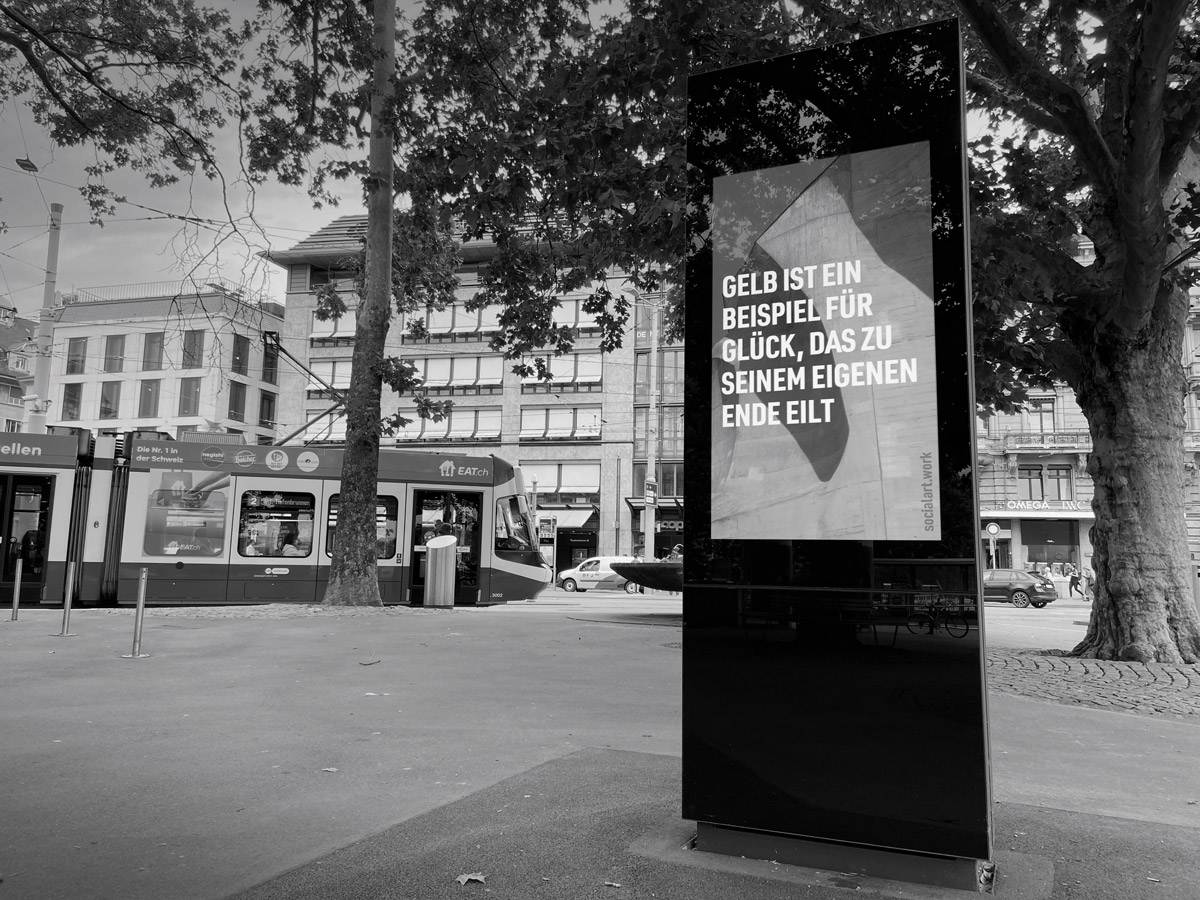We use the cookies _ga, _gat, _gid to collect anonymous data about how you use this site. OK.
Gelb Ist Ein Beispiel Für Glück, Das Zu Seinem Eigenen Ende Eilt, 2020
Die Chromatika
was created by the artist for the Swiss cities of Basel and Zurich in response to Goethe's
Zur Farbenlehre/Theory of Colours
and Rudolf Steiner's writings on colour (which were themselves informed by Goethean thought).
The series consists of 7 digital posters and a later publication of the same title, exploring the artist's relationship with each of the spectral colours in greater detail.
In
The Chromatika,
Yellow suggests the loveliness of limber, gangling summer:
We walked four miles in incredible yellow heat. It lay over the shingle beach like a slick of thick gold oil. The yellow horned sea poppies collapsed under its weight, flayed by it.
But according to Goethe, yellow is ‘light attenuated by darkness’. An essential element of yellow, then, is its relation to darkness. There is something unnerving about yellow - its buttercup cheerfulness is backed by shadow.
There is a kind of sunlight with something approaching sadness in it, very pale, golden, cool, soon lost. In mid-winter, the sun’s yellow light is weighted with a much greater proportion of darkness than in summer. By mid-afternoon, our shadows run long and faint across the garden’s pale yellow grass. Yellow is both a warmth and a warning that warmth cannot last.
About the colour yellow, the artist writes:
When I was a student in London in the 1980s, I shared a flat with a woman a little older than myself. She had lots of yellow textiles in her bedroom - yellow blinds, yellow cushions, a yellow bedspread, and so on. I told her I thought the colour was very cheerful. She replied that she thought so, too, but a friend had told her yellow was a depressing colour and often associated with suicide. She wondered if her yellow bedroom could lead her one day to take her own life. ‘Redecorate or die,’ I told her. A flash of yellow may evoke happiness but there is also something in it that predicts the end of happiness or, at the very least, points to its inherent fragility.
Als ich ein Student war, teilte ich meine Wohnung mit einer Frau, die viele gelbe Textilien in ihrem Raum hatte - gelbe Jalousien, gelbe Kissen und so weiter. Ich sagte ihr, dass ich die Farbe sehr fröhlich fände. Sie entgegnete, dass sie das Gleiche dachte, aber ein Freund habe ihr erzählt, dass Gelb eine depressive Farbe sei und oft mit Selbstmord in Zusammenhang gebracht würde. Ich wollte die Idee vermitteln, dass ein Aufleuchten von Gelb Glück hervorrufen kann, dass es aber auch etwas enthält, dass das Ende von Glück voraussagt oder seine prinzipielle Zerbrechlichkeit.



